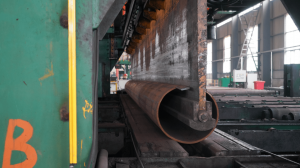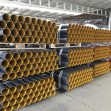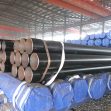Stable growth can help steel demand elasticity recovery
The steel industry, like many others, has experienced fluctuations in demand over the years. Economic downturns, changing market dynamics, and shifts in consumer behavior can all impact the demand for steel. However, by achieving stable growth, the steel industry can restore and enhance its demand elasticity, ensuring a more resilient and prosperous future. Demand elasticity refers to the responsiveness of demand to changes in cold rolled steel pipe price or other factors. When the demand for steel is elastic, even minor changes in price or market conditions can lead to significant fluctuations in demand. This can make the industry vulnerable to economic downturns or disruptions in the supply chain. On the other hand, when demand elasticity is restored, the industry becomes more resilient and better equipped to withstand market fluctuations.
One of the key factors in achieving stable growth is maintaining a balanced supply-demand relationship. Steel manufacturers need to closely monitor market trends, assess customer needs, and adjust their production accordingly. By avoiding excessive production during periods of weak demand and ensuring an adequate supply during periods of high demand, the industry can achieve a more stable growth trajectory. This balanced approach helps to prevent oversupply or shortages of Hot Rolled Round Steel Pipe, which can disrupt the market and impact the demand elasticity of steel.

Additionally, diversifying the applications and customer base can contribute to stable growth. The steel industry traditionally serves sectors such as construction, automotive, and infrastructure. However, by exploring new markets and applications, manufacturers can reduce their reliance on a single sector and mitigate the impact of fluctuations in any particular industry. For example, expanding into renewable energy infrastructure or emerging technologies can create new opportunities for hot dipped galvanized steel pipe demand and provide a buffer against market volatility.
Furthermore, innovation plays a crucial role in restoring demand elasticity. By continuously investing in research and development, the steel industry can introduce new and enhanced products that meet evolving customer demands. This includes developing high-performance and sustainable steel solutions, improving manufacturing processes, and embracing digitalization and automation. Innovative products and technologies not only attract customers but also contribute to the industry’s ability to adapt to changing market conditions.
Collaboration and partnerships are also instrumental in achieving stable growth. By fostering strong relationships with customers, China steel tube manufacturers, and industry stakeholders, the steel industry can gain insights into market trends, manage risks, and identify new opportunities. Collaborative efforts can lead to joint research projects, the sharing of best practices, and collective efforts to stimulate demand and foster a favorable business environment.
Tel: +86 18202256900 Email: steel@fwssteel.com










